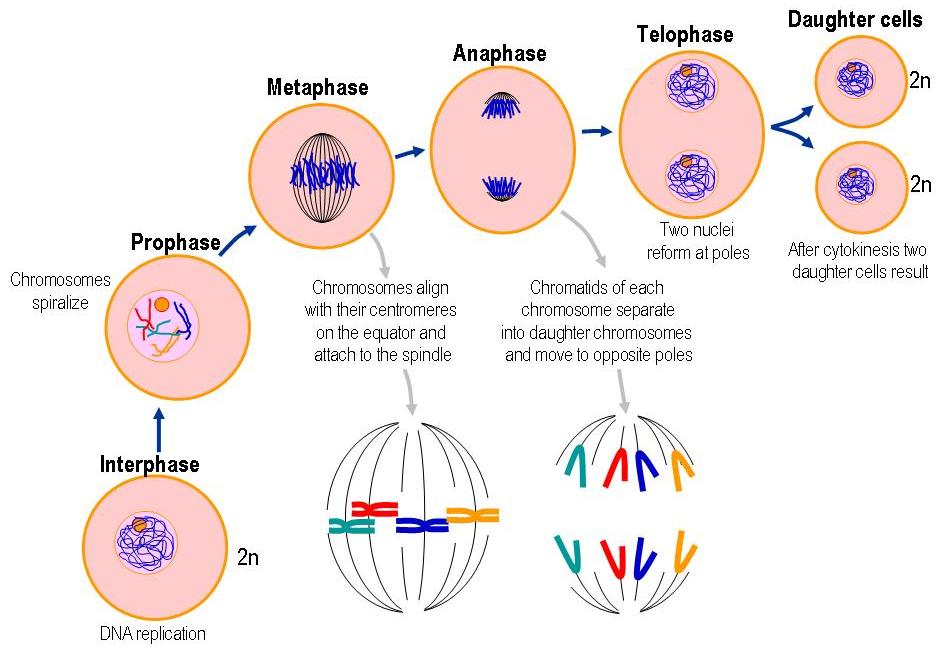
Each sister chromatid contains one of the two strands of DNA that result from the semi-conservative DNA replication process that took place during the previous S-phase (see Chapter 16). Each chromosome is composed of two sister chromatids. Prophase begins as the chromatin starts to condense from its metabolically active state into well-defined chromosomes that are more easily moved through the cytoplasm. Randy Wayne, in Plant Cell Biology, 2010 19.1.1 Prophase Finally, during diakinesis, the chromosomes are maximally condensed. On average, two to three crossovers are noted per pair of chromosomes. Eventually, the two homologues are held together only at points called chiasmata (crosses), which likely reflect points of crossing over. After recombination has occurred, the synaptonemal complex begins to break down, and the two components (known as the homologues) begin to separate from each other. In this process, the two chromosomes literally trade similar parts of their structure, called homologous regions, with each other. During this stage, crossing over (or recombination) between members of a chromosome pair occurs. Then, during pachytene, the pairs of chromosomes become condensed and coiled. Each pair of chromosomes is held together by a ribbon-like protein and forms the synaptonemal complex. During zygotene, homologous chromosomes begin to align along their entire length by a process called synapsis that is necessarily precise. The two sister chromatids are so closely aligned that they are not distinguishable. Leptotene begins with the already replicated chromosomes becoming visible as thin threads. Prophase I can be divided into several stages, as follows.

Rosenberg, Diane Drobnis Rosenberg, in Human Genes and Genomes, 2012 Prophase I


 0 kommentar(er)
0 kommentar(er)
